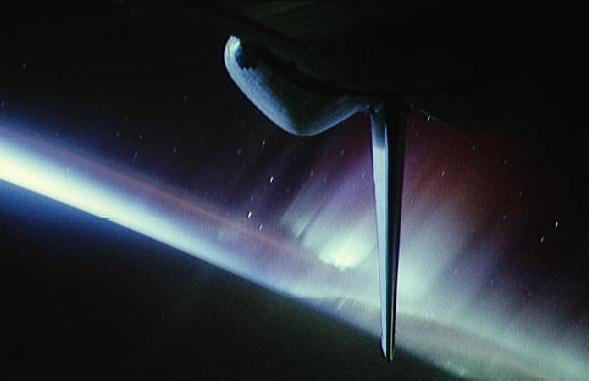
|
Credit & Copyright: STS-68 Crew,
NASA
Explanation:
Sailing
upside down, 115
nautical
miles above Earth, the crew of the
Space Shuttle Endeavour
made this spectacular time exposure of the southern
aurora (aurora australis) in October of 1994.
Aurora,
also known as the northern and southern lights,
appear as luminous bands or streamers of light
which can extend to altitudes of 200 miles.
They are typically visible from the Earth's surface at high latitudes and
are triggered by high energy particles from the Sun.
The delicate colors are caused by energetic electrons colliding with
oxygen and nitrogen molecules in the upper atmosphere.
In this picture, the rear
structure of the shuttle Endeavour is in the foreground with
the vertical tail fin pointed toward Earth.
Star trails
are the short streaks above Earth's horizon.
|
January February March April May June July August September October November December |
| ||||||||||||||||||||||||||||||||||||||||||||||||
NASA Web Site Statements, Warnings, and Disclaimers
NASA Official: Jay Norris. Specific rights apply.
A service of: LHEA at NASA / GSFC
& Michigan Tech. U.
Based on Astronomy Picture
Of the Day
Publications with keywords: aurora - space shuttle
Publications with words: aurora - space shuttle
See also:
- APOD: 2025 January 7 Á A New Years Aurora and SAR Arc
- APOD: 2024 December 8 Á Aurora around Saturns North Pole
- APOD: 2024 October 16 Á Colorful Aurora over New Zealand
- APOD: 2024 October 13 Á Aurora Timelapse Over Italian Alps
- Northern Lights, West Virginia
- Aurora Australis and the International Space Station
- APOD: 2024 June 26 Á Timelapse: Aurora, SAR, and the Milky Way
